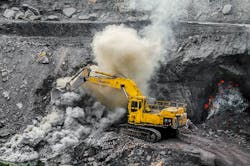DOE providing $35 million for projects reducing Methane in Oil, Gas & Coal sectors
The U.S. Department of Energy will provide $35 million in funding, under the Reducing Emissions of Methane Every Day of the Year (REMEDY) program of the Advanced Research Projects Agency–Energy (ARPA-E), to 12 projects aimed at developing technologies to reduce methane emissions in the oil, gas and coal industries.
Secretary of Energy Jennifer M. Granholm said, “Methane is a powerful greenhouse gas that is more than 25 times as potent as carbon dioxide and we must adopt technologies to dramatically reduce these emissions. By creating new technologies, we are working to mitigate climate change and minimize the cost of methane abatement.”
The teams selected under the REMEDY program will work to address over 50,000 engines, 300,000 flares and 250 mine shafts that produce methane emissions. The selected teams include:
· The Colorado State University will make hardware to redirect the emissions to the engine’s turbocharger. This will improve fuel efficiency and reduce emissions. The DOE will provide $1,500,000 for this project.
· The Waukesha Gas Engines of INNIO will develop pistons that will not allow methane to ‘slip’ past the combustion zone in the engine. A total of $2,230,693 will be provided for this project.
· MAHLE Powertrain will make a catalytic system to oxidize methane in the exhaust gas of lean-burn natural gas-fired engines. This project will be allocated $3,257,089.
· Marquette University will get $3,975,058 to demonstrate their Mixed Controlled Combustion (MCC) system retrofitted into lean-burn engines.
· The Texas A&M University will get $2,824,814 to use plasma and advanced engine controls to reduce the amount of methane allowed to ‘slip’ past.
· Advanced Cooling Technologies will get $3,300,000 to adapt their combustor design to ensure a 99.5% methane destruction efficiency for the gas sent to flares. The combustors will be able to withstand over 2500 degrees Fahrenheit of heat and made using 3D printing.
· Cimarron Energy will get $1,000,000 to develop a hybrid flare design with advanced controls to ensure a 99.5% destruction efficiency.
· University of Michigan to use the $2,881,762 to make their advanced burner for a new flare system design, which can lead to poor methane destruction efficiency.
· University of Minnesota will use the $2,141,876 from the DOE to use plasma-assisted combustion for better flare methane destruction efficiency.
· Precision Combustion will get $3,720,317 to make an innovative modular system to promote methane reaction and manage thermal loads in a novel reactor design.
· The Massachusetts Institute of Technology will make a low-cost copper-based catalyst to reduce methane emissions. It will get $2,020,903 for the project.
· Johnson Matthey will develop a new technology, which will use a noble metal catalyst to combust methane in coal mine ventilation systems. It will get $4,346,015 for the project.
About the Author
EnergyTech Staff
Rod Walton is senior editor for EnergyTech.com. He has spent 17 years covering the energy industry as a newspaper and trade journalist.
Walton formerly was energy writer and business editor at the Tulsa World. Later, he spent six years covering the electricity power sector for Pennwell and Clarion Events. He joined Endeavor and EnergyTech in November 2021.
He can be reached at [email protected].
EnergyTech is focused on the mission critical and large-scale energy users and their sustainability and resiliency goals. These include the commercial and industrial sectors, as well as the military, universities, data centers and microgrids.
Many large-scale energy users such as Fortune 500 companies, and mission-critical users such as military bases, universities, healthcare facilities, public safety and data centers, shifting their energy priorities to reach net-zero carbon goals within the coming decades. These include plans for renewable energy power purchase agreements, but also on-site resiliency projects such as microgrids, combined heat and power, rooftop solar, energy storage, digitalization and building efficiency upgrades.
